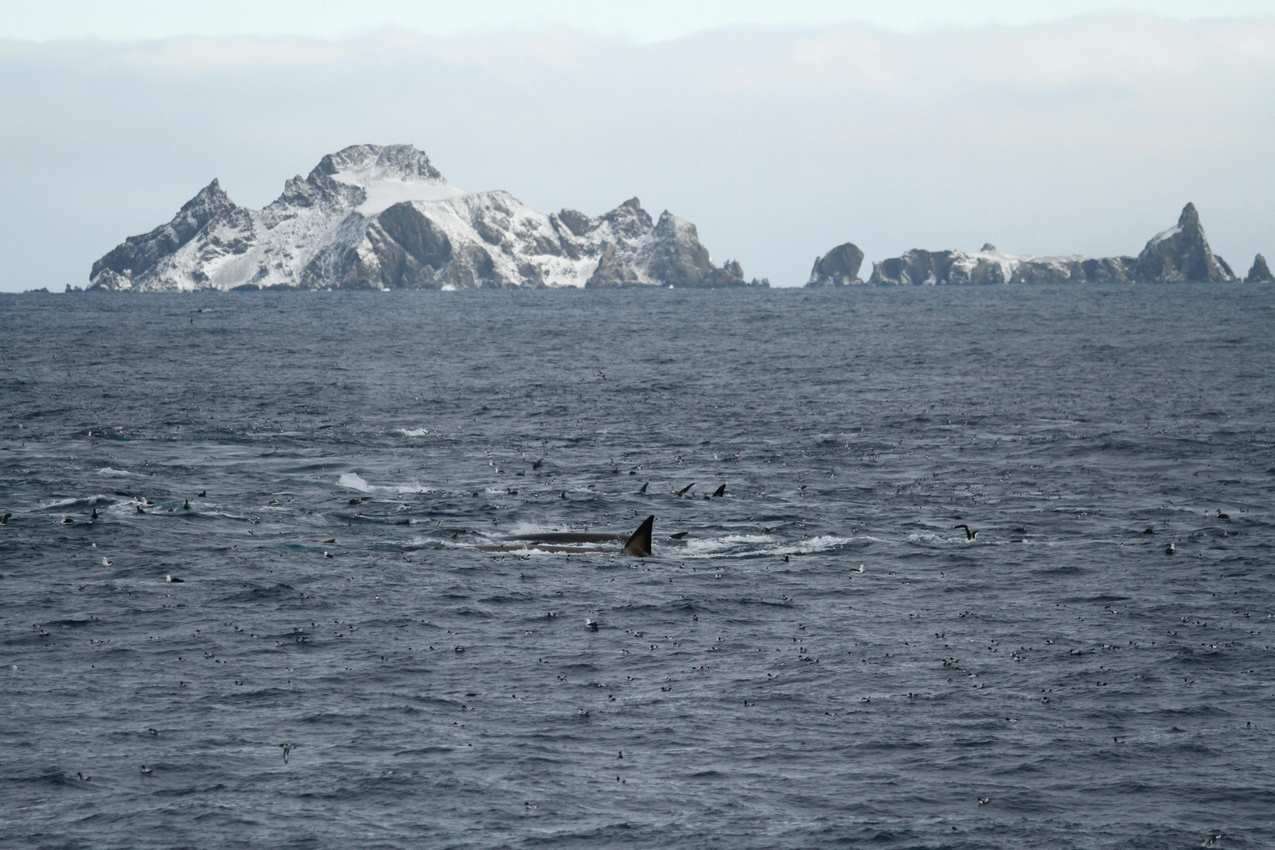Watch Women's Intimate Encounter With Humpback Whale Flipping-on the Charm Near Vancouver
The two women approached from far away, but the whale decided he would like to have a closer look, giving the boaters a shock.

Southern fin whales have been documented feeding in large numbers in ancestral feeding grounds in Antarctica for the first time since hunting was restricted in 1976.
The authors estimate that fin whales could number just under 8,000 after video documentation captured a symphony of blowhole eruptions from the mammals in the ocean around Elephant Island.
They suggest that recovering fin whale populations could enrich the marine ecosystem of the Antarctic through nutrient recycling from whale feeding and excrement (known as the 'whale pump'), and, in turn, support increasing growth of phytoplankton and greater krill populations.
Southern fin whales (Balaenoptera physalus quoyi) are a subspecies of fin whale that inhabits the Southern Hemisphere. They're the second largest whale species after the blue whale and were extensively hunted during the nineteenth century, particularly around specific feeding grounds in Antarctica.
By the time fin whale hunting was banned in 1976, they were rarely seen in their traditional feeding regions.
Helena Herr and colleagues from the University of Hamburg estimated fin whale abundance based on all sightings of individuals and groups along 2,020-mile search tracks in expeditions in 2018 and 2019.
They recorded 100 groups of fin whale with group sizes ranging from 1 to 4 individuals, and 8 unusually large groups of up to 150 whales which appeared to be actively feeding, smashing previous maximums that numbered just 13.
The authors modelled fin whale population densities in Antarctica based on these sightings and predict a population of 7,909 fin whales for the total survey area, with a density 0.09 individuals per kilometer squared-three-times as high as fin whale populations in southern California (0,03).
The authors report a noticeable hotspot of fin whales around Elephant Island with a predicted abundance of 3,618 individuals, or 0.21 whales per kilometer squared.
WATCH the waterworks below…
SPOUT This Good News Out To Your Friends…
Be the first to comment